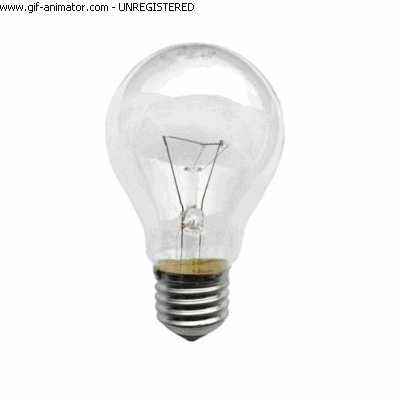Abstract
Contents
- Introduction
- The relevance of the topic
- The goals and objectives
- 1. Advantages and disadvantages
- References
Introduction
An important issue of energy–efficient lighting are the rules of lighting and lighting design. A significant effect of energy efficiency gives the correct lighting design (combinations of sources and their power in relation to the desired level of lighting and the use of lighting devices). Selecting the optimal combination of light sources should begin with the calculation of the coverage and accounting rules of lighting.
The goals and objectives
Led lighting holds the leading position in the lighting market, because it is a light decision making no net environmental impact from the point of view that it helps conserve precious resources of our planet. In terms of General cost reductions, development of new standards, green initiatives and legislation aimed at protecting the environment, create more opportunities for the use of led lighting, both nationally and internationally.
One of the barriers holding back widespread adoption of led lighting is relatively low awareness of people about this technology [3].
1. Advantages and disadvantages
Everything goes to the fact that there is a rapid development of led lighting systems, which will replace traditional light sources in General lighting. White light approaching, and in some cases superior to traditional light source luminous flux and light quality, which makes led lighting systems very attractive [5]. In dozens of countries "green" initiatives and directives on energy efficiency accelerate the transition from traditional lighting to led lighting systems that reduce energy consumption and harmful effects on the environment, are the most useful service life and the lowest cost of ownership and operation in a variety of applications.
Because led lighting is an emerging technology, suppliers of led light sources and luminaires must continue to innovate and improve their products for their promotion on the market. Manufacturers must also play an active role in informing consumers about the benefits of led lighting and how it differs from traditional. Without the necessary knowledge about the technology of led lighting consumers will not be able to properly assess the suitability of led lighting systems for a specific application or solve practical problems and to properly compare an led lighting system with traditional.
Led lighting is a new kind of lighting that use new principles, materials and management tools. Therefore, suppliers of led lighting products should help consumers to understand their characteristics. Led lighting can be harmoniously integrated into the environment and used by the people for the good, but some time ago, such opportunities did not exist. Properly selected and correctly installed led lighting systems can improve the quality of environment and quality of life of people worldwide.
LEDs open the door to new applications and different markets with a wide series of requirements. Among other advantageous features, the LEDs provide high reliability and long service life — more than 50 thousand hours, but a manufacturing defect and bad conditions can significantly reduce the reliability of these products. In order to avoid failure or to quickly find a solution of these problems requires a good understanding of the mechanisms of failure and to use appropriate methods of analysis.
In its functionality, performance and efficiency, well-designed led lights are superior to traditional [6].
We list them opportunities:
- create a bright direct lighting objects, work surfaces and target areas both indoors and outdoors;
- ensure consistent high-quality color and white light with virtually no visible color differences between light devices. Suitable for use in almost any lighting systems;
- ensure a full spectrum of primary colors and white light with a full range of shades, from warm to cold;
- reproduce full–color custom white light to create dynamic light effects with the change color and large-scale displays, which can not be implemented using traditional lighting;
- provide higher efficiency, compared with traditional lighting systems;
- reliably emit light for many thousands of hours — that is, when the fluorescent lamp and incandescent lamps are already failing;
- easy to install and operate using traditional tools and techniques for new and retrofit lighting systems;
- provide high resistance to vibration and work effectively at low temperatures.
Figure 1 shows the different light sources. Figure 2 shows the change in the effectiveness of various types of lighting.

Figure 1 — The different light sources
animation: format - gif, frame - 4, repeats - 15, the duration - 6 sec

Figure 2 — The change in the effectiveness of various types of lighting
References
- Берг, А. Светодиоды. / А. Берг, П. Дин – М.: Мир, 1979. — 450 с.
- Круглов, И. И. Разработка промышленной технологии и организация выпуска единичных и матричных светодиодов на основе карбида кремния / И. И. Круглов, В. И. Павличенко, И. В. Рыжиков // В сб. трудов III Всесоюзной конференции по полупроводниковому карбиду кремния, М., 1970. — С. 276–290 с.
- Мешков, С. П. Основы светотехники. / С. П. Мешков — М.: Техническая литература, 1960. — Т. 1, 2. — 230 с.
- Гридин, В. Н. Полупроводниковая лампа – источник освещения будущего / В. Н. Гридин, И. В. Рыжиков, В. Н. Щербаков // Автоматизация в промышленности, 2007. — № 7. — С. 63–65.
- Коган, Л. М. Светодиодные осветительные приборы. Светотехника. 2002. № 5. С. 16–20.
- Сайт корпорации Nichia.
- Сайт корпорации Philips.
- Сайт корпорации Acriche.
- Сайт корпорации Cree.
- Сайт корпорации Luxeon.
